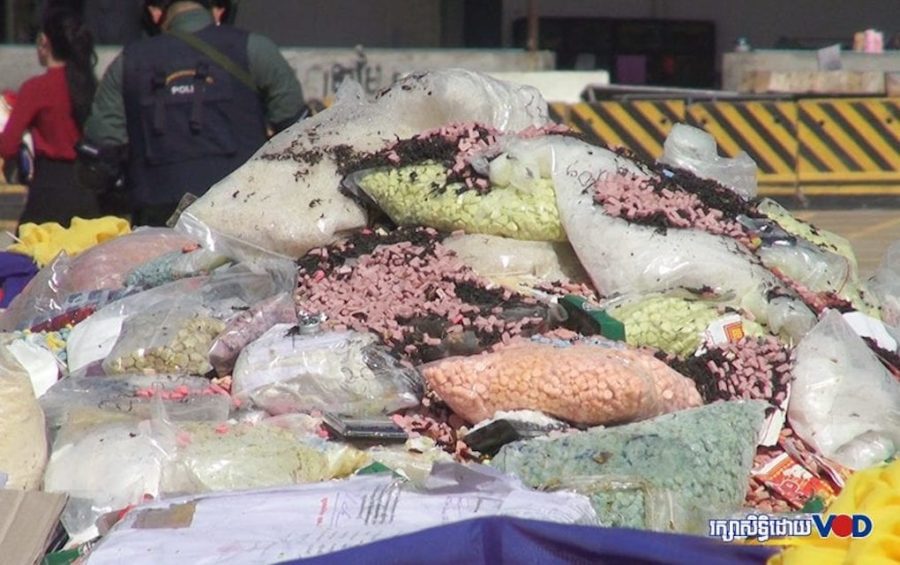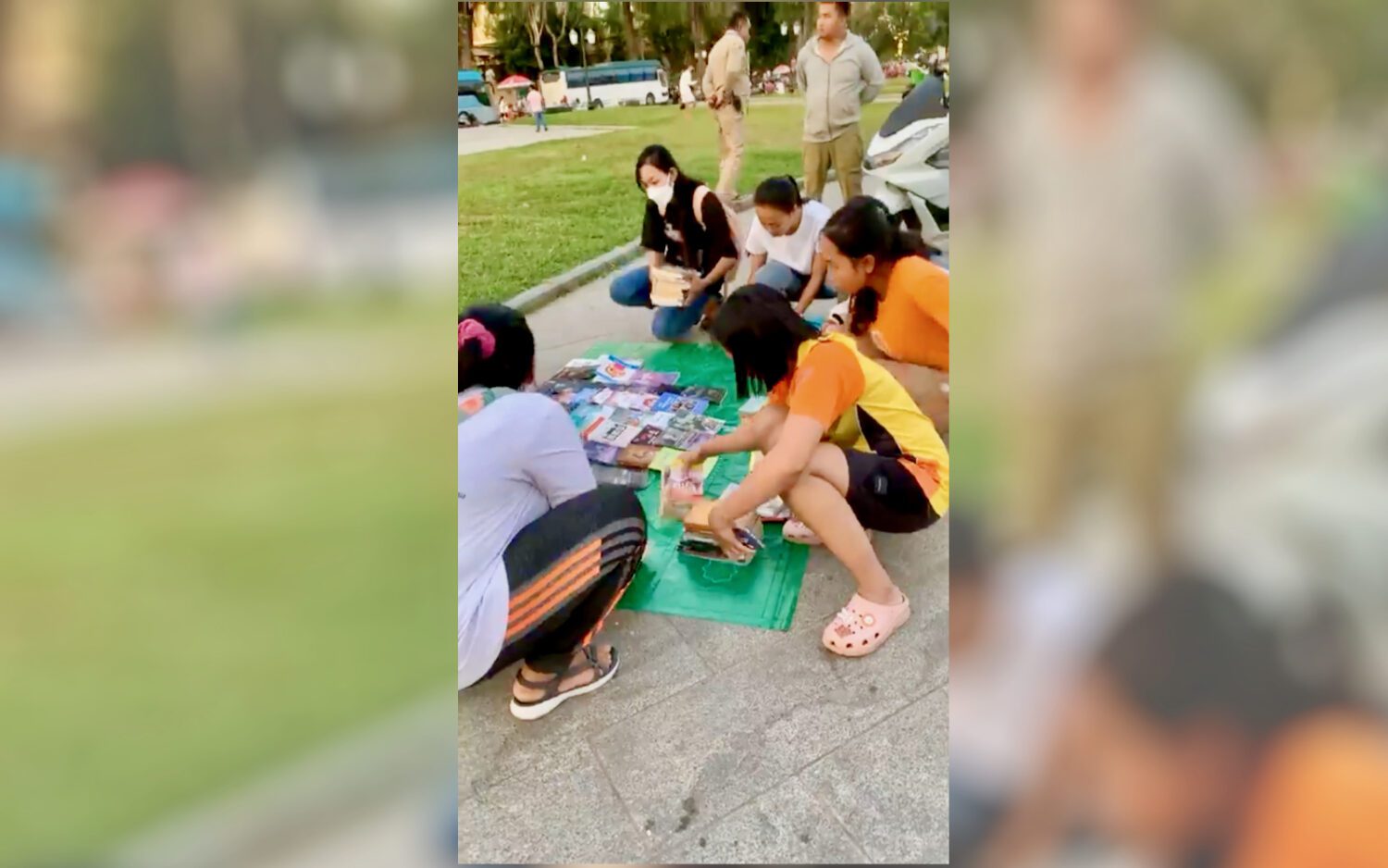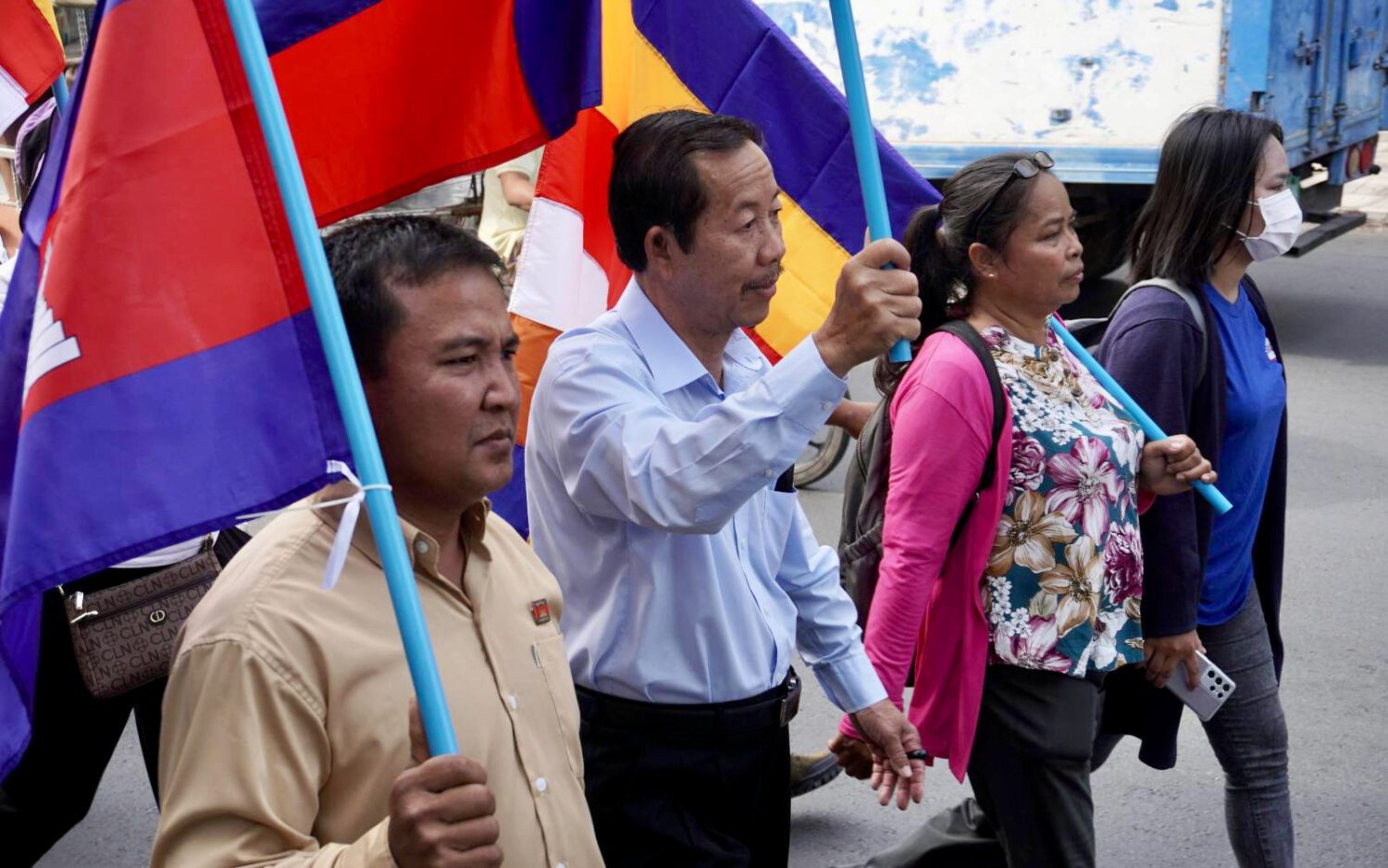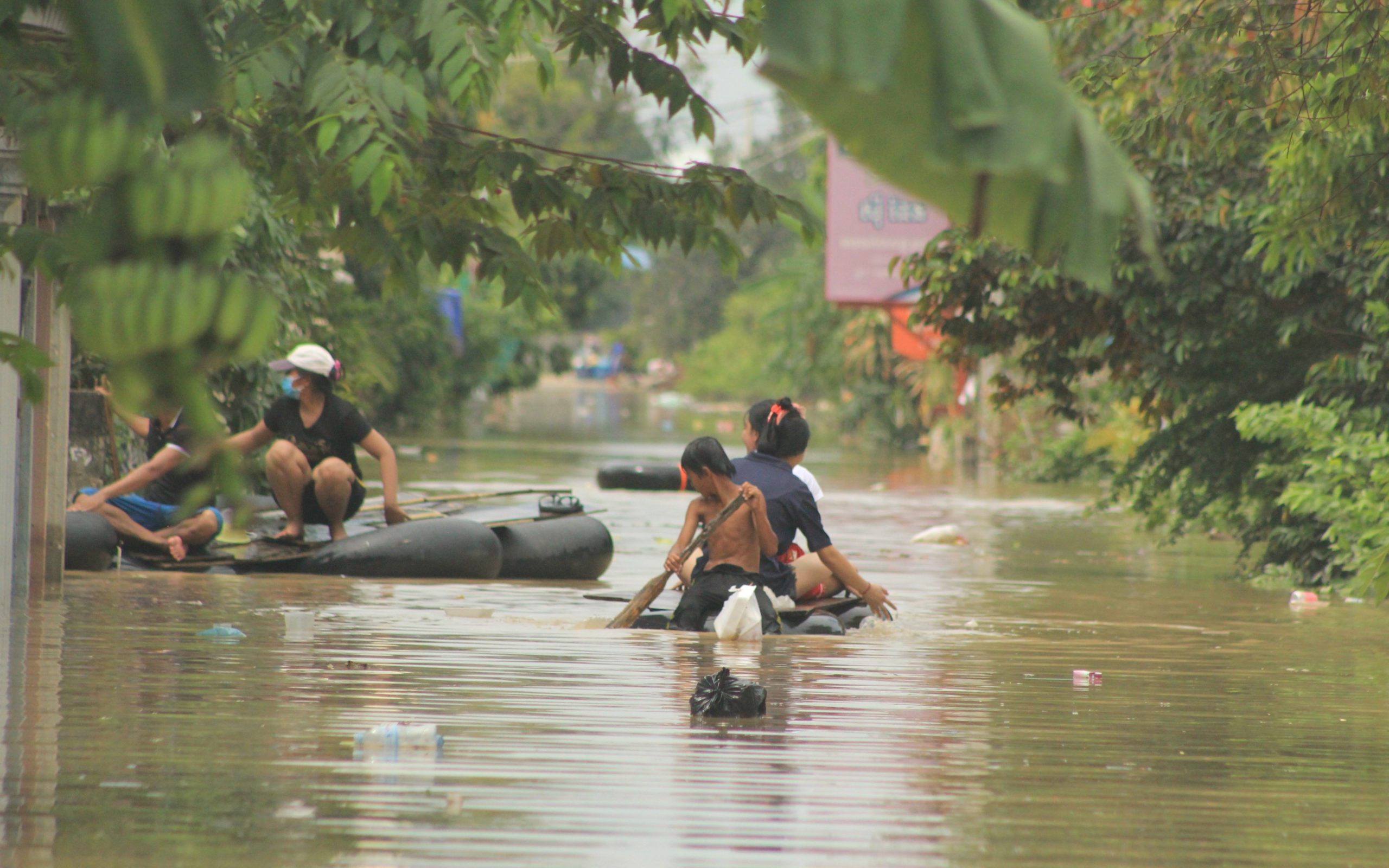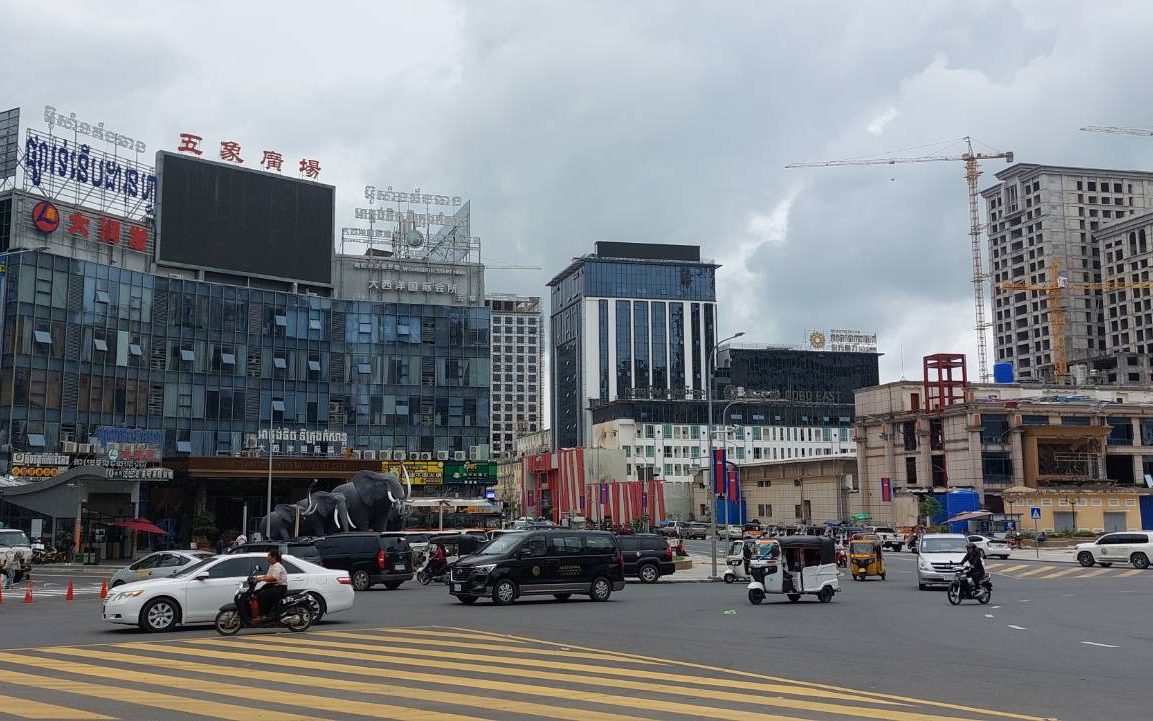Organized crime groups — with individuals commonly from China and Taiwan — are “increasingly targeting” Cambodia for the production of meth and ecstasy and the trafficking of ketamine, with international syndicates’ signature tea bags used for smuggling found in the country, a new report from the U.N. Office on Drugs and Crime says.
In its report on the latest developments and challenges in synthetic drugs in East and Southeast Asia, released on Thursday, the UNODC says Southeast Asia is the predominant source of methamphetamines in the region, accounting for 71 percent of total meth seized in East and Southeast Asia. Seizures are down in East Asia but up in Southeast Asia, it says.
Cambodia appears to be a rising player in the trade, the report says.
“While Shan State, Myanmar, remains the main source of illicit manufacture of methamphetamine in the region, there are growing signs that Cambodia is being increasingly targeted for large-scale illicit methamphetamine manufacture, showing organized crime diversifying their methamphetamine supply channels,” the report says.
Organized crime groups are also “increasingly targeting” the country for ecstasy manufacture and the trafficking and transhipment of ketamine, it says.
Signs of the increase include the dismantling of five clandestine synthetic drug laboratories in 2020 alone.
“Most notably, in August, 1.9 tons of a suspected methyl alpha-phenylacetoacetate (MAPA) and 600 kg of 3,4-MDP-2P (PMK) were seized in Sihanoukville,” the UNODC says, referring to meth and MDMA precursors.
Another relatively large-scale synthetic drug manufacturing facility was dismantled in July, with 193 kg of crystalline methamphetamine and nearly 2 tons of a variety of chemicals seized at the site, the report says.
It also notes “an increasing importance of ‘ecstasy’ manufacture in the country,” with MDMA or precursors found at four raided labs. The report points particularly to a Phnom Penh facility raided in April 2020.
Furthermore, in February this year, authorities seized 465 kg of ketamine on Koh Poulo Wai island, where the drug was concealed in “distinctive” tea bags, the report says. The tea bags indicate that the drugs were “manufactured by organized crime groups operating in the Golden Triangle that use a similar packaging method for crystalline methamphetamine,” it says.
The tea bags have been found as far afield as Australia, India and New Zealand, and are most commonly labeled “Guanyinwang,” “Qing Shan,” “Pin Wei,” and “Daguanyin,” the report says.
In response to a question about the origins of the organized crime groups, the office added in an email that major seizures reported over the past year most commonly involve individuals from China and Taiwan.
Overall, seizures of crystal methamphetamine hit a record in Cambodia in 2020, with 863.5 kg seized, up 124 percent from 384.9 kg in 2019, according to the report. Some 4,650 people were admitted to drug treatment centers in 2020, it adds.
Across the region, seizures are at record highs but prices at record lows due to “the ease with which organized crime has been able to diversify the locations of manufacture and obtain controlled precursors as well as an increasingly wide range of non-controlled chemicals,” the report says.
National Authority for Combating Drugs secretary-general Meas Vyrith said it was possible that criminals were trying to use Cambodia for drug manufacturing, and recent drug raids have led to the arrests of many foreign nationals, including those from China.
“So we need to consider whether those actions are under the umbrella of organized crime or not. We are making an evaluation and we are searching for full evidence in order to make an evaluation to make a report to the leaders about the risk that it could happen,” Vyrith said.
He added that authorities had seized some documents written in Chinese during drug busts, and were still investigating their content.
The rise in seizures were a change from previous years, and possibly indicated shifts in the regional drug trade, he said.
Nevertheless, authorities had confiscated 4 tons of chemicals during drug raids since 2020, and “we have destroyed its organization,” Vyrith said.
In February, a Chinese inmate of Phnom Penh’s Prey Sar prison — who was arrested in connection to the seizure of 2 tons of drugs and chemicals and was described as a “mastermind” — escaped after being taken to the Khmer-Soviet hospital for surgery.


